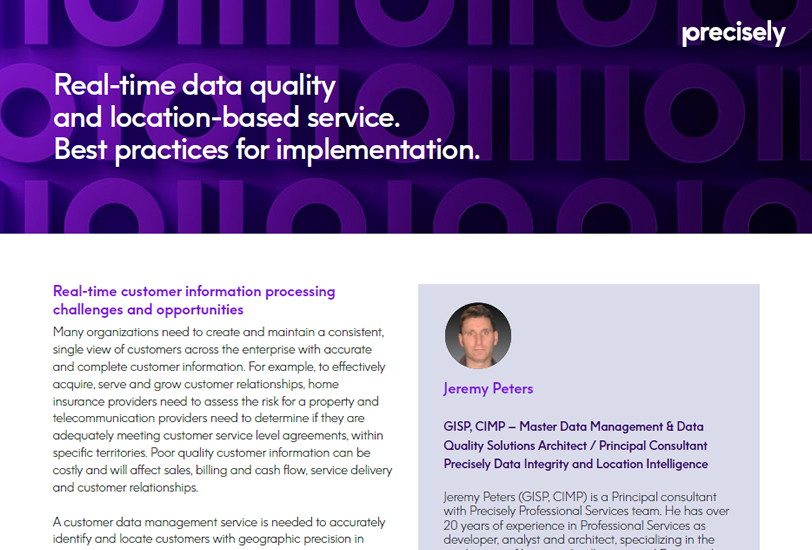White Paper
Real-Time Data Quality and Location-Based Service
The integration of enterprise data quality, address management and location-based service-oriented technologies enable customer information management
Many organizations need to create and maintain a consistent, single view of customers across the enterprise with accurate and complete customer information. For example, to effectively acquire, serve and grow customer relationships, home insurance providers need to assess the risk for a property and telecommunication providers need to determine if they are adequately meeting customer service level agreements, within specific territories. Poor quality customer information can be costly and will affect sales, billing and cash flow, service delivery and customer relationships.
Location-based service for the design and implementation of real-time web services
A customer data management service is needed to accurately identify and locate customers with geographic precision in relation to the business network. Accurate data and real-time analysis can help ensure that customers receive information regarding the availability of different service offerings. In some cases, the distance from a network asset or the service area in which a customer is located (e.g. electric utility substation, telecommunications wire center, insurance flood zone) must be determined with high geographic precision to ascertain what kind of service the customer is capable of receiving. Organizations need the ability to understand spatial relationships with confidence and make that information available to sales agents, service reps and customers in real time.
The integration of enterprise data quality, address management and location intelligence service-oriented technologies are enabling customer information management (CIM). For example, integration provides the means to correct, standardize, and validate customer information as well as to connect those customers geographically to the business network in a real-time environment using web services. Organizations are also able to determine the serviceability of a customer’s location to help sell services, assign pertinent information to a customer’s location required to enable service activation and provide services. These technologies are often implemented using customized rules that are published as Web-services using modern service oriented architectures (SOA). As such, web services are often easily integrated into new or existing customer management and billing systems.
This paper describes how an advanced mapping application can be used to provide advanced mapping and spatial analysis capabilities in conjunction with a web based portal to help review and analyze exception records where the location precision requires manual review because it is within the error of possibly assigning inaccurate service information.
